Did you know that vehicles equipped with modern safety features are involved in up to 50% fewer accidents? While style, comfort, and price play major roles in vehicle shopping, only the right essential car safety features to look for can truly protect you and your loved ones. In today's fast-evolving automotive landscape, understanding which safety features matter—and why—is more crucial than ever.
Why Essential Car Safety Features Matter More Than Ever
"Data reveals that vehicles equipped with advanced safety features see up to 50% fewer accidents compared to those without. Your next car choice could mean the difference between risk and safety."

Buying a car is one of the most significant investments you make, and more than ever, your decision impacts far more than just your daily commute. With advances in safety tech—like adaptive cruise control, blind spot monitoring, and automatic emergency braking—today’s vehicles offer life-saving advantages over older models. As you shop for your next ride, knowing which features protect you in real-world scenarios is vital. The difference between having—or lacking—a critical safety feature could dramatically affect your safety and budget.
What You'll Learn: A Comprehensive Guide to Essential Car Safety Features to Look For
Understand the critical car safety features that protect drivers and passengers
Identify the latest innovations in safety feature technology
Learn which essential car safety features to look for can save lives and reduce costs
Understanding Essential Car Safety Features
What Defines Essential Car Safety Features?
Essential car safety features to look for include any safety technology or system built specifically to prevent injuries, reduce accident risk, or minimize the impact of a crash. These features have become the foundation of car safety standards worldwide, shaped by research from organizations such as the Insurance Institute for Highway Safety (IIHS) and the National Highway Traffic Safety Administration (NHTSA). Today’s essential features must go beyond basic seatbelts and airbags, as advanced driver assistance systems like lane departure warning, blind spot monitoring, and electronic stability control are rapidly transforming the driving experience. When searching for a new car, you need to consider not just the legal or minimum requirements, but the elements proven to save lives—many of which are now available even in non-luxury vehicles.
Passive vs. Active: Types of Car Safety Features
Car safety features fall into two main categories: passive and active. Passive safety features, like airbags, seatbelts, and crumple zones, are designed to protect occupants when a collision occurs. These systems do not require activation and are always at work, absorbing impact energy and minimizing injuries. Active safety features, including electronic stability control, anti-lock braking systems (ABS), and traction control, are designed to actively prevent accidents in the first place. They use sensors and real-time feedback to keep the vehicle stable, respond to sudden driving maneuvers, and maintain traction and braking under unforeseen circumstances. Understanding how both passive and active systems interact will help you prioritize the essential car safety features for your next purchase.
As you evaluate which safety technologies are most important, it's also worth considering how these advanced driver assistance systems can impact your vehicle's repair process after an accident. For a deeper look at how features like lane-keeping assist and adaptive cruise control affect post-collision service, explore this guide on how advanced driver assistance systems affect collision repair.
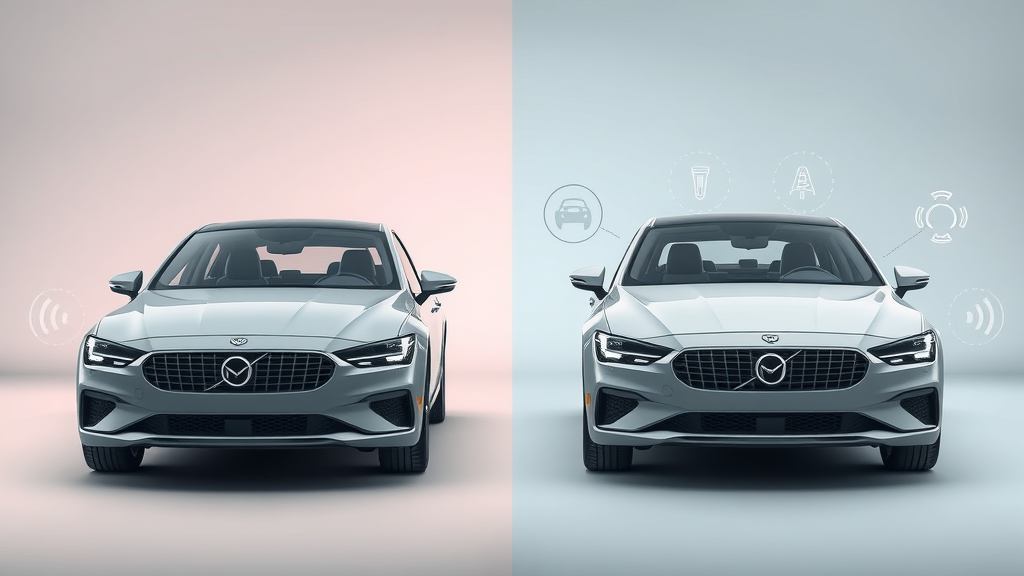
The Evolution of Car Safety: From Seatbelts to Advanced Driver Assistance
The journey of car safety began with the widespread adoption of seatbelts and gradually grew to include features like airbags and crumple zones. Modern vehicles now leverage complex safety technology, such as forward collision warning and automatic emergency braking, thanks to rapid advancements in automotive design and sensor technology. New cars come equipped with advanced driver assistance systems (ADAS), which use radar, cameras, and AI to monitor and react to their environment. This evolution means buyers now have access to features that would have been considered cutting-edge—or even science fiction—a decade ago. Keeping up with these innovations is essential if you’re planning to stay as safe as possible behind the wheel.
The Foundation: Passive Essential Car Safety Features to Look For
Airbags: Still a Cornerstone Safety Feature
Airbags remain one of the most crucial essential car safety features. These passive safety features deploy at lightning speed upon collision, protecting occupants from direct impact and potentially fatal injuries. Advanced airbag designs now include side-curtain, knee, and even rear seat airbags, offering comprehensive defense for everyone in your vehicle. Airbag placement and sensitivity tuning have evolved, ensuring deployment only when necessary to avoid injury from unnecessary inflation. If you’re buying a car, verify the types and locations of airbags, as more coverage means greater protection for your passengers and you.
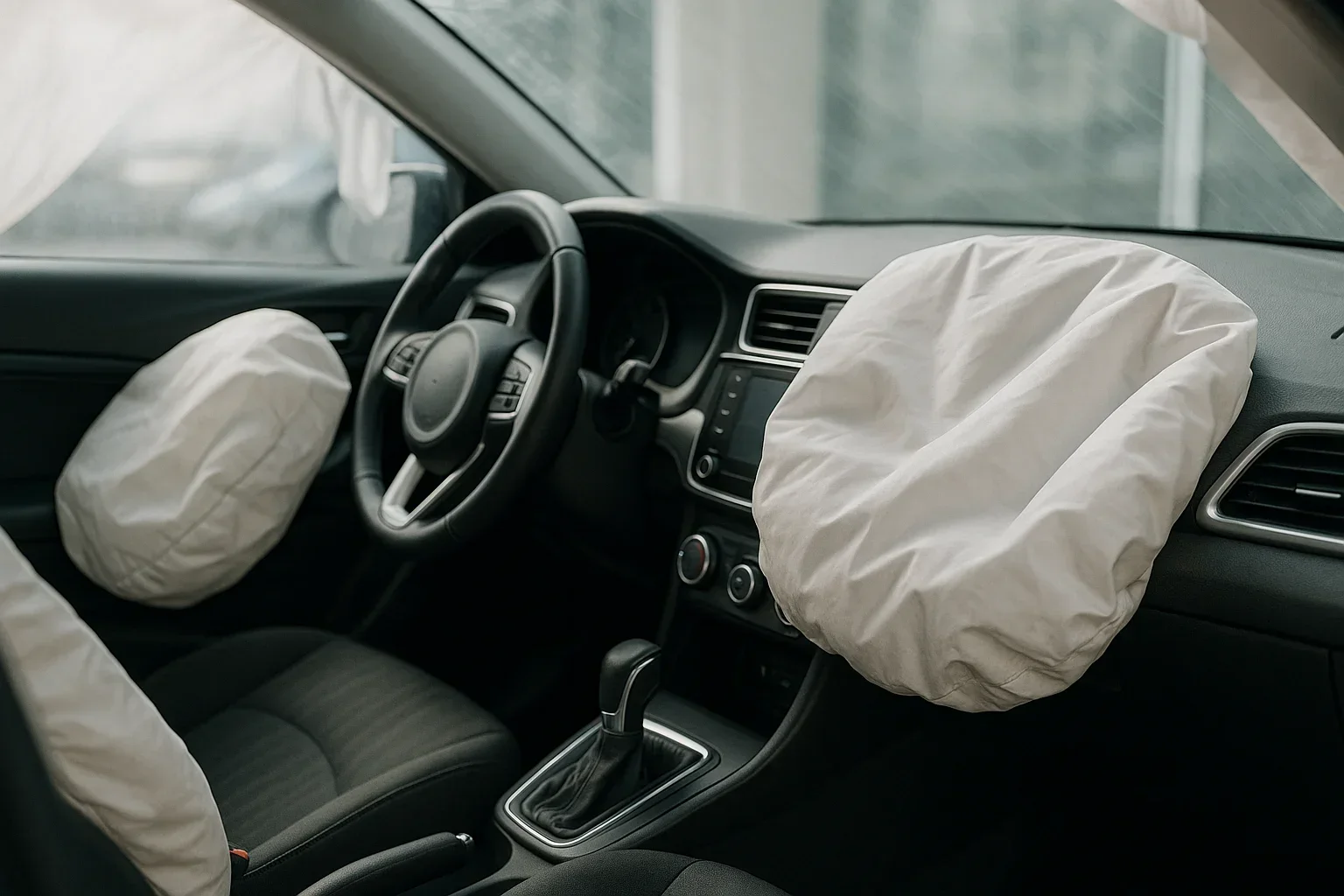
Seatbelts: Your First Line of Defense
The simple seatbelt remains the backbone of car safety features. Modern seatbelt systems integrate pre-tensioners and load limiters, cutting-edge advancements that tighten the belt in the event of a crash and reduce the force across your body. Three-point seatbelts are standard front and rear in all new vehicles, but checking for additional enhancements can make a significant difference. Always ensure that every seat in the car—not just the driver’s and front passenger’s—has properly functioning seatbelts. For families, also look for adjustable anchors and compatibility with child seats.
Crumple Zones and Safety Cell Construction
Crumple zones are a hidden yet revolutionary aspect of vehicle safety design. These engineered areas deform in a controlled manner during a collision, absorbing force before it reaches the passenger cabin. Combined with a reinforced safety cell—the protective “cage” around occupants—they dramatically reduce injury risk. When choosing your next car, ask about the vehicle’s crash protection ratings and check reviews describing structural reinforcements. Cars with advanced crumple zones and robust safety cells are consistently rated higher by the Insurance Institute for Highway Safety, meaning they’re a smart investment in your everyday safety.
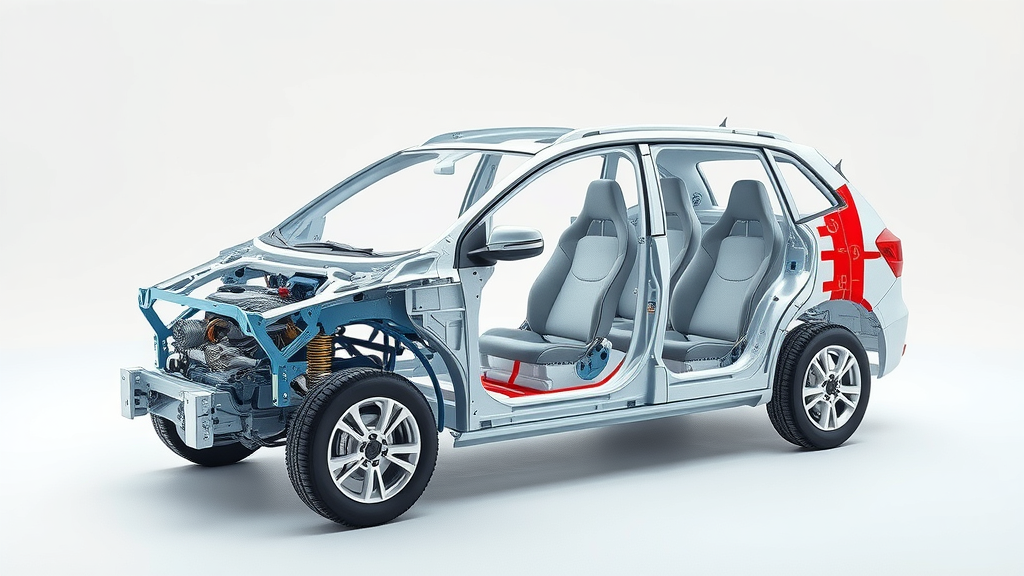
Active Safety Features: The Next Level of Car Safety
Electronic Stability Control: Preventing Skids and Rollovers
Electronic Stability Control (ESC) is a game-changer among active safety features. This technology uses sensors to continuously monitor the vehicle’s movement and steering direction. If it detects a loss of control—such as when skidding or a potential rollover—it automatically applies brakes to individual wheels and may reduce engine power, helping you regain control instantly. Studies by the Institute for Highway Safety have found that ESC reduces the risk of fatal single-vehicle crashes by more than half. Make sure any car you consider is equipped with this feature—it’s essential for safe winter and rainy driving conditions, in particular.
Anti-lock Braking Systems (ABS)
ABS, or anti-lock braking systems, prevent your wheels from locking up during sudden braking. This allows you to maintain steering control in emergencies and reduce stopping distances. ABS is vital in slippery conditions where traditional braking could cause a skid. Most modern vehicles feature ABS as standard, but it’s worth checking if the system includes enhanced sensors or integrates with other active safety systems like traction control and emergency braking. Remember, having ABS doesn’t replace safe driving practices, but it is an invaluable backup when instant response is needed.
Traction Control Systems
Traction Control Systems (TCS) work hand in hand with ABS and ESC to optimize grip and stability. By automatically managing engine torque and selectively braking slipping wheels, TCS helps maintain maximum traction during acceleration on wet, icy, or uneven surfaces. This technology is particularly useful for keeping your vehicle stable when merging onto highways, turning sharply, or navigating steep hills. Be sure to verify that TCS is present and integrated with other active safety technologies, as this suite of features provides a second layer of defense when conditions become hazardous.
Driver Assistance Systems: Modern Essential Car Safety Features to Look For
Adaptive Cruise Control: Smarter Speed and Distance Management
Adaptive cruise control goes beyond traditional cruise control by using radar and cameras to detect the vehicle in front and automatically adjusts your speed to maintain a safe following distance. This driver assistance feature is invaluable in heavy traffic, as it can slow, stop, and accelerate your car in response to real-world conditions. Some systems even work in stop-and-go traffic, reducing driver fatigue and increasing highway safety. As one of the fastest-growing safety technologies, adaptive cruise control is now available in many mainstream vehicles—not just luxury models. Always check how this system is implemented, as capabilities can vary greatly between manufacturers.

Blind Spot Monitoring: Seeing What You Can't
Blind spot monitoring systems use sensors positioned around your vehicle to alert you when another car enters your blind spot—a crucial feature for highway driving and safe lane changes. When a hidden vehicle is detected, a visual or audible warning is triggered, vastly reducing the chance of a side-swipe collision. According to safety studies, this driver assistance system cuts down lane-change accidents significantly, especially in busy traffic or when driving larger vehicles like SUVs. Make blind spot monitoring a non-negotiable feature when shopping for your next car, as it offers vigilance where human vision cannot.
Lane Departure Warning and Lane Keep Assist
Lane departure warning and lane keep assist technologies are at the forefront of accident prevention. Lane departure warning alerts you—often via steering wheel vibration or dashboard message—if you unintentionally drift out of your lane, while lane keep assist can gently steer you back on course. These advanced driver assistance systems use cameras to read lane markings in real-time, helping prevent accidents caused by distraction, drowsiness, or road conditions. For anyone who spends time on highways, these features are must-haves. Review a car’s lane assist specs carefully to understand how intrusive or helpful the intervention will feel.

Forward Collision Warning
Forward collision warning uses radar and cameras to continuously scan the road ahead for potential collision risks, such as a slow or stopped vehicle in front. If a threat is detected and you don’t react in time, the system provides a strong visual and/or audio warning. By alerting drivers to danger before it’s too late, this feature reduces rear-end crashes and is often paired with automatic emergency braking (AEB) for best results. Be sure the forward collision warning on the model you’re considering is sensitive and responsive, as real-world effectiveness depends on cutting-edge sensors and prompt alerts.
Automatic Emergency Braking
A step further than warning alone, automatic emergency braking (AEB) can independently apply your vehicle’s brakes if you don’t react quickly enough to an imminent crash. The AEB system is engineered to detect both vehicles and, in many cases, pedestrians. According to the Insurance Institute for Highway Safety, cars with AEB are much less likely to be involved in front-to-rear crashes. Since this technology is now being offered as standard on a growing number of new vehicles, confirm its presence before buying—and make sure its coverage includes low-speed city situations and high-speed highway emergencies alike.
Additional Essential Car Safety Features to Look For
Rearview Cameras and Parking Sensors
Modern rearview cameras and parking sensors do more than just help you back into a tight space; they offer a full view of what’s behind your vehicle and warn you of obstacles you might miss. Many systems include trajectory lines and audible beeps to guide your movements, making parking in busy lots or residential areas much safer. Some advanced models even integrate with cross traffic alert, detecting passing vehicles as you reverse. Before deciding on your next car, test these features firsthand—they can help prevent costly damage and ensure the safety of children, pets, and pedestrians nearby.
Tire Pressure Monitoring Systems
Tire Pressure Monitoring Systems (TPMS) provide real-time alerts when your tires are under- or over-inflated, a simple but powerful line of defense against blowouts and poor handling. An illuminated alert on your dashboard can warn you before routine maintenance turns critical, helping you avoid accidents due to tire failure. TPMS is a federally required safety feature on all new cars, but the most user-friendly systems allow you to view real-time pressure levels for each tire independently. Always check your car’s TPMS during a test drive—it’s worth the peace of mind.
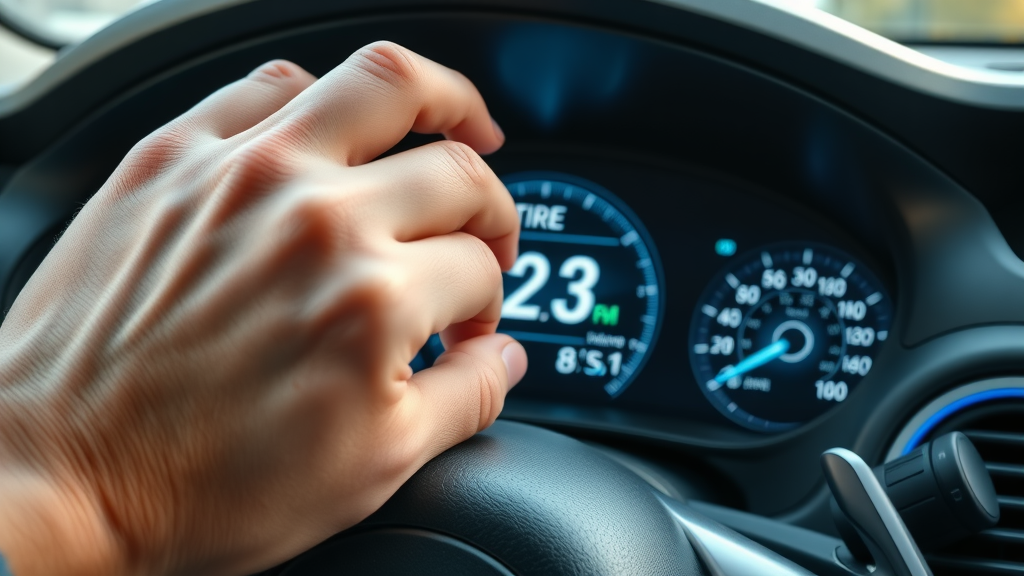
Automatic High Beams and Adaptive Lighting
Better visibility means greater safety at night and in difficult driving conditions. Automatic high beams and adaptive lighting systems detect approaching vehicles and oncoming traffic, automatically adjusting your headlight strength and angle for optimal illumination without blinding others. Adaptive lights can swivel to follow your steering, sharpening your view on curves and corners, while high beam automation relieves you of constant manual toggling. These safety technologies enhance driving comfort and significantly reduce the risk of nighttime collisions.
Essential Car Safety Features to Look For: Crash Avoidance Technologies
Cross Traffic Alert and Rear Cross Traffic Warning
Cross traffic alert and rear cross traffic warning systems use radar sensors to warn you of vehicles approaching from the sides when backing out of parking spots or entering intersections. This is particularly helpful in crowded parking lots or areas with limited visibility. With these systems, you can reverse confidently, knowing that unexpected hazards will trigger timely alerts and potentially even automatic braking. If you frequently park in busy lots or parallel-park on city streets, ensure your next car comes equipped with these vital crash avoidance technologies.
Pedestrian and Cyclist Detection
Many new vehicles now offer pedestrian and cyclist detection as part of their advanced driver assistance suite. These sensors recognize vulnerable road users and can alert you—or even trigger automatic emergency braking—to help prevent tragedy. Urban driving in particular benefits from this technology, as it dramatically reduces the risk of harm to those outside your vehicle. Before purchasing, review how well your prospective model’s system performed in real crash test evaluations, as not all implementations are equally effective.
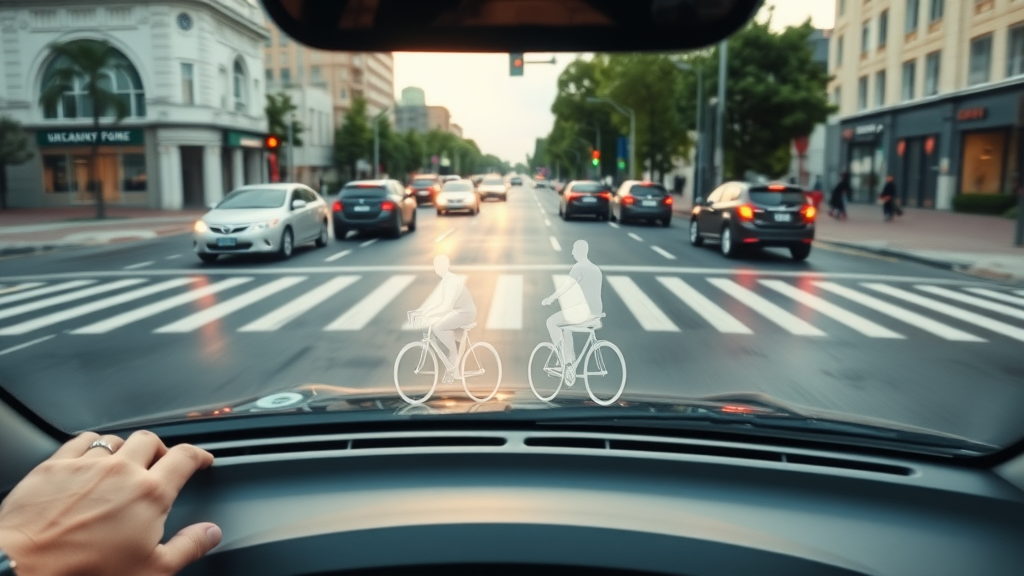
Driver Drowsiness Monitoring
Driver drowsiness monitoring systems analyze steering inputs, lane positioning, and even facial recognition to determine if you’re losing alertness. When signs of fatigue appear—such as micro-corrections or gradual lane drift—the system prompts you to take a break with chimes or visual alerts. While no technology replaces good driving habits and rest, these features provide an added layer of security on long journeys. For commuters or frequent travelers, drowsiness monitoring is a worthwhile addition to your must-have safety tech list.
Table: Comparison of Essential Car Safety Features to Look For in Popular Models
Model |
Airbags |
ABS |
Stability Control |
Blind Spot |
Adaptive Cruise |
Emergency Braking |
|---|---|---|---|---|---|---|
Toyota Camry |
Front/Side/Curtain/Knee |
Yes |
Yes (ESC) |
Optional |
Optional |
Standard |
Honda Accord |
Front/Side/Curtain |
Yes |
Yes (ESC) |
Standard |
Standard |
Standard |
Ford F-150 |
Front/Side/Curtain |
Yes |
Yes (ESC) |
Optional |
Optional |
Optional |
Hyundai Sonata |
Front/Side/Curtain |
Yes |
Yes (ESC) |
Standard |
Standard |
Standard |
How to Evaluate Essential Car Safety Features to Look For When Shopping
Checking vehicle safety ratings
Using online safety comparison tools
Questions to ask at the dealership

Before making your purchase, start by checking crash test ratings from the Insurance Institute for Highway Safety (IIHS) and NHTSA. Many organizations offer easy-to-use online features that compare vehicles side by side, highlighting differences in safety features and crash test performance. When visiting the dealership, ask for a demonstration of advanced driver assistance systems like blind spot monitoring and adaptive cruise control. Many cars now also have digital dashboards that show the status of active safety features—take advantage of this during your test drive. Don’t hesitate to ask if a particular model includes a specific feature as standard or if it’s part of an upgrade package.
Expert Insight: The Future of Essential Car Safety Features to Look For
"Tomorrow’s vehicles will prioritize advanced safety feature integration, making driver error less of a factor in accidents." — Auto Safety Researcher
As autonomous vehicle technology advances, manufacturers will increasingly focus on integrating these life-saving safety features into standard equipment. The goal is not just safer vehicles, but fewer accidents—and ultimately, fewer fatalities—on the road. It’s a future where proactive systems act as an extra set of eyes and hands, catching risks even the most alert driver may miss.
Essential Car Safety Features to Look For: The Role of Regular Maintenance
Why Well-Maintained Safety Features Save Lives
Even the best safety technology won’t protect you if it’s not properly maintained. Routine service ensures your braking system, airbags, sensors, and other mechanical or electronic safety features work as designed. Scheduled maintenance checks—especially after a collision or technical error—can catch faults before they compromise your security. Think of maintenance as your second line of defense; it keeps essential car safety features ready when you need them most.
Routine Checks for Electronic and Mechanical Safety Systems
Set reminders to have your safety tech checked during every oil change or scheduled service. This includes airbag system diagnostics, ABS calibration, camera and radar sensor cleaning, as well as checking tire tread and pressure. Any dashboard warning lights should be addressed immediately, as even minor malfunctions can cause critical systems like emergency braking or lane departure warning to fail. Staying proactive on maintenance guarantees your vehicle’s advanced safety features continue to provide the protection you expect.
Watch this short explainer to see how automatic emergency braking, lane-keeping assist, blind spot monitoring, and adaptive cruise control work together in real-life scenarios. Animated overlays and real-world footage provide clarity on these powerful systems.
FAQs on Essential Car Safety Features to Look For
What safety features should a car have?
Every vehicle should be equipped with airbags, anti-lock braking systems (ABS), traction control, electronic stability control, and seatbelts with pre-tensioners. In addition, crucial modern features include blind spot monitoring, forward collision warning, lane departure warning, automatic emergency braking (AEB), adaptive cruise control, and backing assistance like rearview cameras. When looking for your next car, prioritize vehicles with as many of these essential car safety features as possible, as they provide enhanced protection for drivers and passengers alike.
What safety items should I have in my car?
Aside from built-in car safety features, it’s vital to keep emergency essentials in your vehicle. This should include a first-aid kit, warning triangles/flares, a flashlight, jumper cables, a basic tool kit, tire repair materials, a blanket, bottled water, and a phone charger. These items will help you handle emergencies or breakdowns while you’re waiting for professional help, enhancing your overall safety on the road.
What safety features are a must?
Key mandatory features for today’s cars are stability control, automatic emergency braking, lane departure warning, and forward collision warning. These systems, often required by law, work as your onboard co-pilots—alerting you to danger, correcting course, and stopping your vehicle when you cannot react in time. Never compromise on these critical safety features, as they represent the baseline of modern protection.
What essentials should you always have in your car?
Keep up-to-date documentation (registration, insurance, license), a well-stocked emergency kit, backup phone charger, flashlight, water, and essential tools at all times. Adding a tire inflator or repair kit and reflective vest can offer extra peace of mind. These items, while not integrated safety features, can make a difference in both everyday situations and unexpected emergencies.
Key Takeaways: Essential Car Safety Features to Look For
Prioritize both passive and active safety features
Look for vehicles with advanced driver assistance
Regular maintenance ensures your safety systems work when you need them most
Conclusion: Making an Informed Choice on Essential Car Safety Features to Look For
Summarizing the importance of making safety a primary consideration in your next car purchase.
When it comes to choosing your next vehicle, never let cost or convenience outweigh the importance of essential car safety features to look for. Safeguarding your future starts with making an informed, safety-first decision today.
"Choosing a car with robust safety features isn’t just about ticking boxes—it’s about protecting what matters most."
If you’re committed to making safety your top priority, it’s also wise to understand what happens if your vehicle is ever involved in a serious accident. Knowing the ins and outs of the total loss appraisal process can help you make informed decisions and protect your investment. For a comprehensive overview of what to expect and how to navigate the next steps after a major collision, take a look at this resource on total loss car appraisal and the process that follows. Empower yourself with knowledge so you’re prepared for every aspect of car ownership—from choosing the safest features to handling the unexpected with confidence.
Hear directly from an auto safety expert about the most promising advancements in vehicle safety technology—and how these innovations will reshape driver and passenger protection in the next generation of cars.
Ready to Prioritize Essential Car Safety Features?
We'll help you restore your vehicle to pre-loss condition. Don't stress! Our I-CAR Gold certified team is ready to help. (630) 852-3578
When selecting your next vehicle, prioritizing safety features is essential to protect yourself and your passengers. Key technologies to consider include Automatic Emergency Braking (AEB), which detects imminent collisions and applies the brakes if the driver doesn’t react in time, significantly reducing the chances of front-end collisions. (living.geico.com) Blind Spot Monitoring (BSM) uses sensors to alert drivers of vehicles in their blind spots, reducing the risk of side collisions during lane changes. (carvaidya.com) Adaptive Cruise Control (ACC) adjusts your car’s speed to maintain a safe distance from vehicles ahead, enhancing safety during highway driving. (goldfadenbenson.com) Lane Departure Warning (LDW) and Lane Keeping Assist (LKA) systems alert drivers when they unintentionally drift out of their lane and can gently steer the vehicle back, helping prevent accidents caused by drowsiness or distractions. (carvaidya.com) Electronic Stability Control (ESC) helps maintain vehicle stability during sudden maneuvers or slippery conditions by applying brakes to individual wheels, reducing the risk of skidding or rollovers. (en.wikipedia.org) Additionally, features like Rearview Cameras and Parking Sensors assist with backing up and parking, reducing the risk of collisions with objects or pedestrians behind your vehicle. (goldfadenbenson.com) By ensuring your next car is equipped with these advanced safety features, you can significantly enhance your driving safety and confidence on the road.
 Add Row
Add Row  Add
Add 

Write A Comment